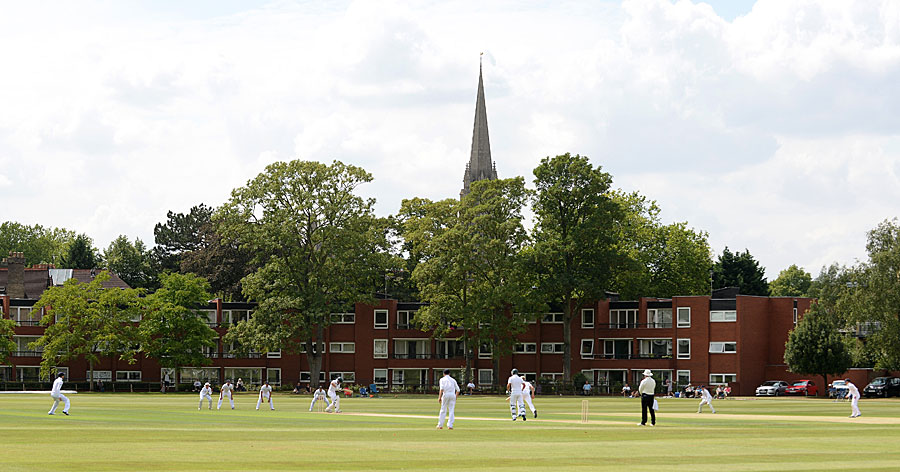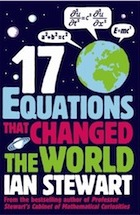"If I knew that I was going to die today, I think I should still want to hear the cricket scores," GH Hardy is said to have remarked to his sister as he lay dying at the Evelyn Nursing Home in Cambridge in late 1947.
The name GH Hardy is synonymous with pure mathematics, a subject on which he wrote a most insightful book for the layperson, called A Mathematician's Apology, though he is perhaps more well known as the mentor of the Indian mathematical genius Srinivasa Ramanujan. Not many are aware that Hardy, one of the predominant English mathematicians of the pre-war era, was also devoted to cricket. Maynard Keynes, the founder of Keynesian economics and a friend of Hardy's at Cambridge, observed that if Hardy had read the stock exchange for half an hour every day with as much interest and attention as he did the day's cricket scores, he would have become a rich man.
Hardy did not receive any form of cricket coaching during his formative years, which led to defects in technique later despite having a brilliant eye for the ball. After finishing school at Winchester, he went on to Trinity College, Cambridge, where he began his ritual of watching cricket at Fenner's, Cambridge's picturesque cricket ground. Hardy would saunter to the ground after lunch and settle into his preferred place opposite the pavilion with an umbrella, some sweaters, and a PhD thesis, or a mathematics paper he was refereeing for the Royal Society. Hardy dubbed these items his "anti-God battery", bringing them along in case it rained.
There was often a troop of cricket enthusiasts accompanying him. In particular, during Hardy's second stint at Cambridge, CP Snow, the author ofStrangers and Brothers and The Two Cultures, was his regular companion at cricket games (Snow is the source of much that is known about Hardy's personal life, including his love for cricket). In the foreword of the Apology, Snow recounts the facets of cricket Hardy found most endearing: "Technique, tactics, formal beauty - those were the deepest attractions of the game for him."
Lev Landau, the great Soviet physicist, used a logarithmic scale to rank the productivity of prominent physicists. Hardy had an equally unique way of ranking notable mathematicians and physicists. In a postcard to Snow he wrote, "Bradman is a whole class above any batsman who has ever lived: if Archimedes, Newton and Gauss remain in the Hobbs class, I have to admit the possibility of a class above them, which I find difficult to imagine. They had better be moved from now on into the Bradman class."
Hardy's use of cricket jargon also extended to the types of people he befriended. "He had a great many friends, of surprisingly different kinds," Snow writes in the Apology. "These friends had to pass some of his private tests: they needed to possess a quality which he called 'spin' (this is a cricket term and is untranslatable: it implies a certain obliquity or irony of approach: of recent public figures, Macmillan and Kennedy would get high marks for spin, Churchill and Eisenhower not)."
Even Snow's friendship with Hardy was owed "to having wasted a disproportionate amount of my youth on cricket". Hardy was looking for a cricket companion on his return to Cambridge from Oxford in 1931 and word had reached him that a junior fellow by the name of Snow was a cricket enthusiast. One night, Hardy summoned a nervous Snow after dinner to Christ College's combination room and began a gruelling examination of his cricketing knowledge. Who would he have chosen as captain for the last Test match, a year ago? What would have been his strategy if the selectors had decided Snow was to be England's saviour? And on it went. At the end of the inquisition, Snow recalls Hardy's reaction fondly. "He smiled with immense charm, with child-like openness, and said that Fenner's next season might be bearable after all, with the prospect of some reasonable conversation."
Snow's time with the mathematician is a rich source of Hardy's humorous yet insightful "maxims" on hypocrisy in cricket:
"Cricket is the only game where you are playing against 11 of the other side and ten of your own."
"If you are nervous when you go in first, nothing restores your confidence so much as seeing the other man get out."
The beauty inherent in Hardy's mathematical work is reminiscent of the aesthetic attractiveness of cricket. This love of the game sustained him in his later years when the first love of his life, mathematics, deserted him. As Hardy states in the Apology: "No mathematician should ever allow himself to forget that mathematics, more than any other art or science, is a young man's game." So as his mathematical prowess waned, and his health deteriorated (he had a coronary thrombosis in 1939) and the Second World War raged around him (Hardy was a pacifist and detested anything related to war), he took solace in cricket.
In this gloomy period of Hardy's life, Snow encouraged him to write a cricket book to lessen his despondency. The book was to be called A Day at the Oval, in which Hardy was to write of his experience of watching cricket for a day. It never came to be written, and cricket literature is poorer for it.
Hardy attempted suicide in early 1947 and only survived because he vomited the barbiturates, having taken more than were necessary to kill himself. He was now bedridden at the Evelyn Nursing Home and knew death was imminent. In these last days, he was cared for by his sister. She was aware of her brother's intense fondness for cricket and would search for any cricket story to read to him. As did Snow when he visited Hardy. "Mostly though - about 55 minutes in each hour I was with him - I had to talk cricket. It was his only solace. I had to pretend a devotion to the game which I no longer felt… Now I had to study the cricket scores as intensely as when I was a schoolboy. He couldn't read for himself, but he would have known if I was bluffing."
The last time Snow visited Hardy they discussed the Indian Test team playing in Australia that season. Hardy died early one morning a few days later. His sister had been reading out a chapter from A History of Cambridge University Cricket to him every evening. It seems fitting that that was the last thing Hardy heard.

